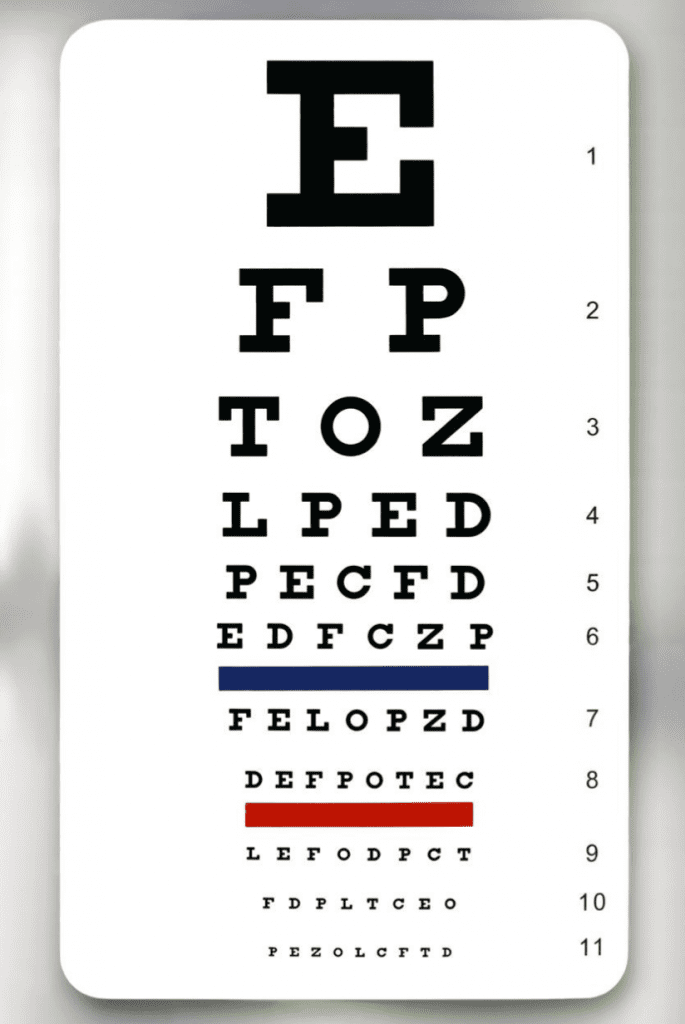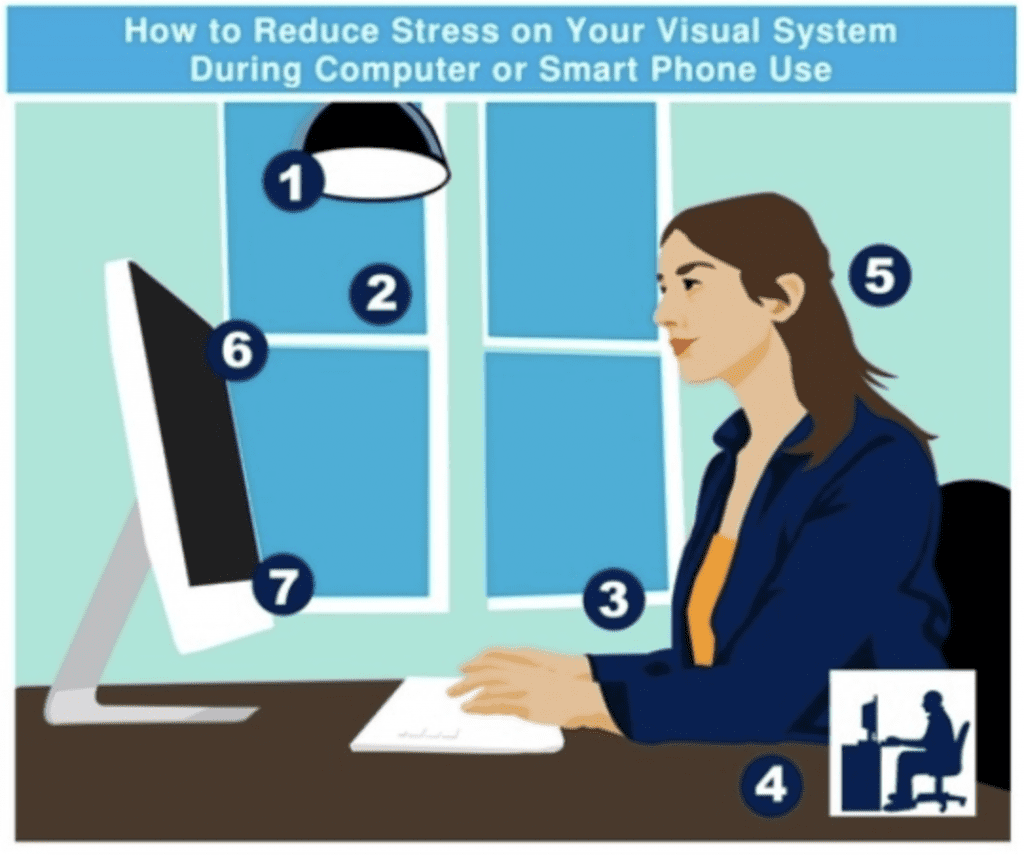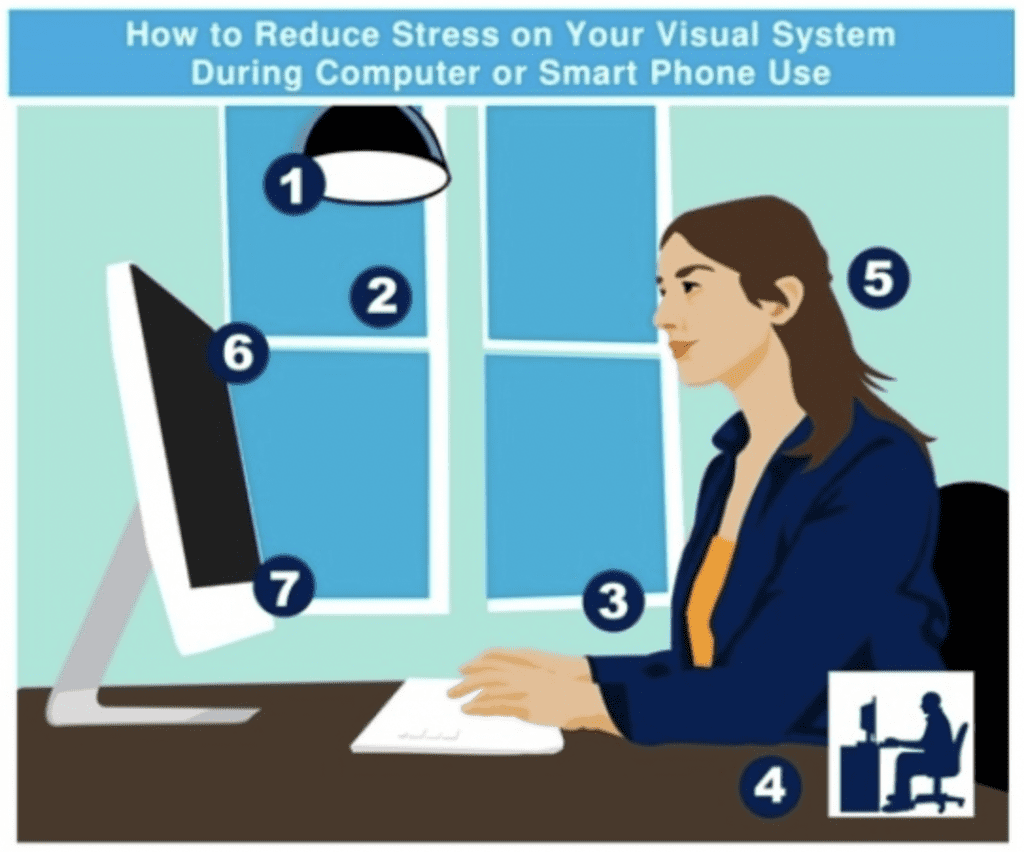Children are using handheld devices like smartphones more than ever. That’s hardly a news flash. But what about the possible consequences that excessive screen time is having on them, especially their vision?
As a developmental optometrist for 28 years, I’ve seen the effects of too much screen viewing firsthand on people of all ages. In fact, we now have phrases like digital eye strain and computer vision syndrome to characterize the problems that people are having because of prolonged screen viewing.
But children are especially vulnerable because of their developing visual systems. That’s why it’s so important to understand the risks that digital screens pose.
A Critical Time for Functional Vision Skills to Develop
Every parent should be aware that excessive screen viewing can adversely affect or, at the very least, put undue stress on a child’s developing functional vision skills.
Let’s first be clear what functional vision is. School vision screenings and conventional eye exams typically only evaluate visual acuity, which is the ability to see objects clearly. This is usually tested with the help of a Snellen eye chart such as the one below.
 Functional vision is different. It’s an active process. It’s how you see an object in space, and how your entire visual system — the eyes, the brain, the visual pathways — works together to help you interact with your environment. More specifically, it involves these skills:
Functional vision is different. It’s an active process. It’s how you see an object in space, and how your entire visual system — the eyes, the brain, the visual pathways — works together to help you interact with your environment. More specifically, it involves these skills:
- Eye teaming. In normal vision, this occurs when both your eyes align to focus on the same point in space and work together in a precise and coordinated way.
- Eye focusing. This encompasses your ability to see an object clearly and to shift focus between objects at different distances.
- Eye movement. This includes your eyes’ ability to maintain fixation on a moving object through space, to move fixation from one object to another, or to sustain fixation on a stationary object.
The development of these skills can be hampered by excessive viewing of digital screens.
 How too much screen time can affect functional vision
How too much screen time can affect functional vision
1. Near-point stress on developing eyes
Children often hold smartphones and similar handheld devices dangerously close to their eyes. But their developing visual system is simply not prepared to handle this kind of near-point stress on the eyes.
Moreover, the addictive quality of handheld devices can compound the problem. We all know that without adult supervision and restrictions, children will easily spend an hour or more staring at a screen without a break.
In the short-term, prolonged near-point stress from screen viewing can cause:
- Eye fatigue
- Dry and irritated eyes
- Headaches
Even more serious, this stress on the visual system can cause blurred vision and difficulty in adjusting to seeing objects in the distance. Conditions like these can hamper the development of a child’s functional vision.
If a child already has a functional vision problem, excessive screen viewing could cause symptoms like those just mentioned. Or, the constant near-point stress could actually lead to a functional vision problem.
 2. Excessive screen time detracts from valuable activities that facilitate development
2. Excessive screen time detracts from valuable activities that facilitate development
Children are on a developmental timeline when it comes to their social and cognitive skills, as well as their functional visual skills.
That’s why physical activities that get your child to engage with an object moving through space — playing simple catch is a great example — are actually critical for functional vision development.
But we’re now at a point in our culture where screen time could actually eclipse the time a child spends doing activities vital to helping functional vision develop. This is especially alarming considering how functional vision problems can often go undetected.
Tips for Preventing Problems and Engaging Your Child’s Functional Vision Skills
Yes, children are viewing screen-based digital media for both entertainment and education more than ever. But as a parent, you’re in a unique position to control just how much they stare at a screen.
So what can you do? Start with these tips:
Trust your gut and take action. If you think your child is spending too much time looking at a screen, there’s a good chance you’re right. Don’t ignore your gut. Begin taking steps to limit screen time. If you don’t take action, who will?
Be mindful of the behavior you’re modeling to your children. Children notice — and are influenced by — how adults use digital devices. How digitally distracted are you? Model the kind of screen habits you want your child to have.
Use the Harmon Distance. If your child is going to use a smartphone or any other handheld device with a screen, make sure they don’t hold it too close to their eyes.
There’s actually a good rule of thumb to help you on this, which optometrists call the Harmon Distance. This is measured by placing a closed fist under the chin, and then holding the device at the tip of the elbow. When viewing the device, your child shouldn’t hold it any closer than that distance.
(By the way, this tip also applies to adults and should be used for other activities as well, like reading a book or looking at a desktop computer screen.)
Balance smartphone use with playing ball. For an older child, try to have them balance their handheld device use with activities that not only engage their body but also their functional vision.
For example, for every hour of screen time, get them to participate for an equal amount of time in a ball-related activity like ping-pong, tennis, baseball, Frisbee, football, soccer — anything in which an object is moving through space.
But it doesn’t have to be a competitive sport. Think of the catch example mentioned above. The point is that you want them to engage their functional vision.
Note that it helps to have your child engage in an activity where they can be successful at least 80% percent of the time. This increases their enjoyment and makes it less likely that they’ll abandon it.
 (If your child really struggles at playing catch, you may want to have them take a Functional Vision Exam.)
(If your child really struggles at playing catch, you may want to have them take a Functional Vision Exam.)
Get More Information on Preventing Screen-Related Vision Problems
The screen-based digital media of today open up a new and exciting world for our children. However, we need to be mindful of how much we allow these devices to dominate their lives — and affect their vision.
In fact, that goes for all of us. For more information on preventing screen-related vision problems no matter your age, download this informative — and free — poster here.
 Also, if you suspect your child could have a functional vision problem, I strongly recommend you take The Vision Therapy Center’s free online Vision Quiz.
Also, if you suspect your child could have a functional vision problem, I strongly recommend you take The Vision Therapy Center’s free online Vision Quiz.
About the author: Dr. Kellye Knueppel is a developmental optometrist specializing in vision related learning problems, sports vision, and rehabilitative optometry. She is board certified in vision development as a Fellow of the College of Optometrists in Vision Development. Since opening The Vision Therapy Center in 1995, she has dedicated herself to helping people overcome their visual problems.












